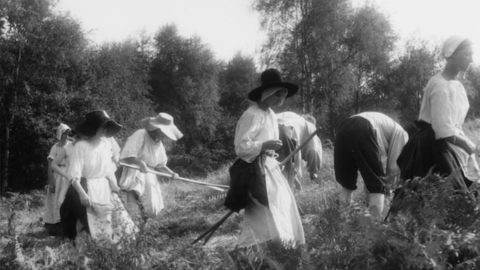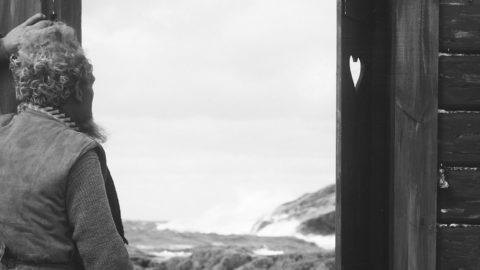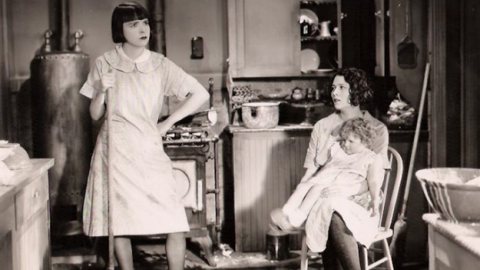Queer & Now & Then: 1928
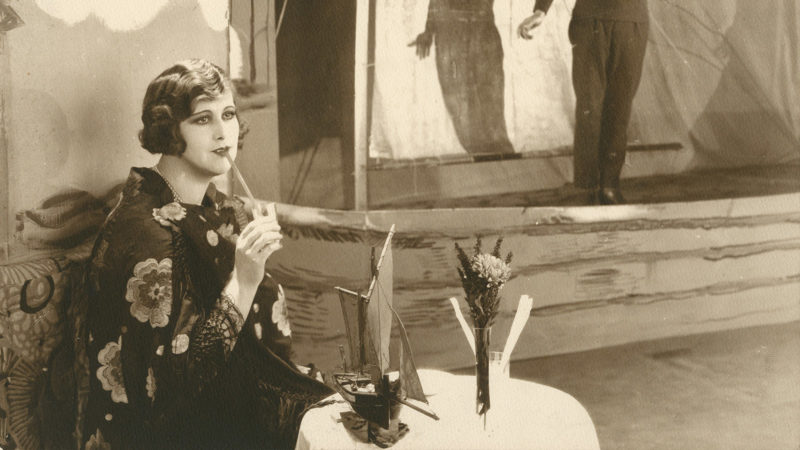
Princess Mandane
The princess has been made a prisoner in her own palace, somewhere deep in the land of the Tartars. Her name is Mandane, and though she governs the principality of Mingrelia, she was taken captive by her own Council of Ministers when she told them that she wanted to abdicate the crown. Meanwhile, half a world away in France, Étienne, a factory worker living a humdrum existence with his loving, plain fiancée Annette, has volunteered to help his company install electric wires in Mingrelia. A wannabe adventurer, enraptured by the exotic lands and feats of derring-do he witnesses at the movies on Saturday nights, Étienne sees his work trip as a magnificent adventure, and perhaps a chance to prove his mettle in rescuing the beautiful damsel in distress. The director and writer of Princess Mandane (1928), Germaine Dulac, has other ideas.
Outspoken, political, and artistically eclectic, Germaine Dulac was born in northern France in 1882 and came of age in Belle Époque Paris. A traditional education at a Roman Catholic boarding school made her distrustful of authority and religious orthodoxy. By the time she discovered and turned her attentions to the cinema in the second decade of the 20th century, she had made her mark as a columnist in leftist and feminist newspaper and journals, putting forth her ideas for the emancipation of women from the constraints of modern bourgeois life. Part and parcel of her firmly held egalitarian ideals were her various aesthetic devotions: to opera, dance, theater, and, perhaps most of all, modern classical music (Debussy was a major formal inspiration for her). Dulac brought all this to bear in formulating her radical philosophies on film, still an emerging art form, if it was acknowledged as an art form at all.
During the early part of the century, the same years she was producing and directing her first films (many of which are now lost), Dulac was also publishing essays extolling the possibilities of the still-nascent medium and advancing the concept of the filmmaker as an auteur, as well as playing a major part in the formation of the ciné-club, an essential movement that would help promote a conception of art cinema as we still see it today. Dulac would come to believe in cinema as a totalizing force, a medium capable of concrete human emotions and visual abstraction in equal measure. For her, there was an ideal of “pure cinema,” an internal landscape made of impressionistic forms and movements that she experimented with, mostly throughout the 1920s and ’30s.
Amidst all this artistic and political enlightenment, Dulac was also coming to terms with her sexuality—and this is hardly incidental to her professional development. Though she was married to Albert Dulac from 1905 to 1922, and though it was a marriage that was marked by intermittent separation, it was partly their relationship that allowed her to surrender to her own desires, as it is believed—via excavated letters between them—that the exceedingly liberal-minded Albert, a great artistic and intellectual influence on Germaine, understood and encouraged her affairs with women. This would have impact on her career as well as her romantic life, as one of those women, Irène Hillel-Erlanger, became a crucial early filmic collaborator, the two of them founding Dulac’s first production company, Les Films DH (so titled after their surnames). Her other romances included the dancer and actress Stasia Napierkowska, who would appear in a number of her films, and, most extensively, Marie-Anne Colson-Malleville, who would work as Dulac’s assistant director on multiple projects.
On screen, one result of Dulac’s life experiences and burgeoning sexuality was a implicit yet consistent questioning of and liberation from heteronormativity, quietly detectable in her more heavily symbolic feminist films (the surrealist classic The Seashell and the Clergyman, 1926) and experimental shorts (the Baudelaire-inspired L’Invitation au voyage, 1927), as well as more commercial films like Princess Mandane. It is in this film that homosexuality becomes a crucial narrative point, however fleeting, rather than intimation. Understanding Dulac’s biography—her fierce independence, her feminism, her simultaneous desire for women and her sympathy for fragile men—helps one unlock Princess Mandane, which for most of its running time plays like a standard, if at times innovatively shot and edited, orientalist male fantasy adventure of the era. Yet the complex network of sexual desires that course through the film are pure Dulac, leading to a climactic Sapphic twist that happens so quickly one might miss it, but which nevertheless cleverly overturns the entire film.
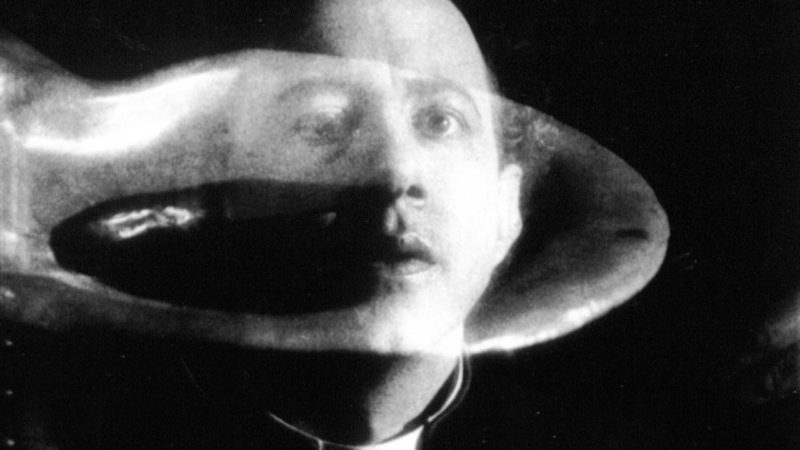
The Seashell and the Clergyman
So let’s go back to where we left off: our intrepid hero Étienne (Ernest Van Duren) has long forgotten his fiancée Annette back home, dreaming of delivering the beautiful Mandane (Edmonde Guy) from imprisonment. Étienne disguises himself as a diplomat and is granted access to the palace; pledging his loyalty to Her Highness, he is allowed into her secret confidence. “Ah! Paris,” she tells him with a dreamy far-off look over an intimate dinner. “It’s there that a woman can be a queen.” Telling her he wants to help orchestrate her escape, she explains to him that she needs him to help procure the diamonds and bejeweled crown hidden in her safe, which her ministers forbid her from opening. After whipping up some distractions for her guards, he successfully helps her break out of her gilded prison, with her lady’s maid accompanying her.
The three escape into the countryside by motorcar, and following a high-speed chase and shootout, handily cross the border. However, once at a safe distance, surrounded by bucolic greenery, Mandane does not romantically embrace Étienne: there is no expected lip-lock, nor is there any profession of love or devotion. Instead she graciously bows to the common man in an explicitly masculine gesture that also functions as a sudden, almost mocking, power reversal, thanks him for his service, and offers him her crown as a “token of her gratitude.” Judging by his look of almost horrified disappointment, he quickly realizes this is a mere consolation prize—the Princess is not his to claim. She and her female servant, glimpsed with their arms happily around each other, are clearly the intended romantic pair, with Étienne the dupe who has helped them reach safe distance, liberating them yet not with the desired outcome. The chauvinist dream has become a nightmare of rejection. Étienne then wakes up, and realizes it was all in his head. Luckily he has Annette to return to, a framing device that would allow heterosexual mainstream audiences of the day to feel somewhat relieved. Yet Dulac’s sophisticated deconstruction of male fantasy lingers in the mind.
There’s a brief but spectacularly expressive and ethereal image early in the film, during the scene in which Étienne and Annette go to the movie that will initiate his dreams of adventure. (The film within the film is Victor Tourjansky’s 1926 adaptation of Jules Verne’s Michel Strogoff.) Dulac shows a line of moviegoers walking into the screening room, figures at a distance, superimposed over a wide beam of projector light, like they’re being lost in its fog. They become small, ghostlike, as though trudging towards the afterlife. A nod to cinema’s hypnotic power, it’s the remarkable expression of an artist who already understands both the beauties and the dangers of a medium in its infancy. Princess Mandane is witty in the way in which it swiftly cuts down socially constructed notions of male power, and extraordinarily wise in the way it acknowledges how popular art perpetuates those myths—that fictions can guide, even control us.
Princess Mandane plays August 25 and 29 at the Film Society of Lincoln Center as part of its Germaine Dulac retrospective (August 24–30) which also includes L’Invitation au Voyage and The Seashell and the Clergyman.
Michael Koresky is the Director of Editorial and Creative Strategy at Film Society of Lincoln Center; the co-founder and co-editor of Reverse Shot; a frequent contributor to the Criterion Collection; and the author of the book Terence Davies, published by University of Illinois Press.



